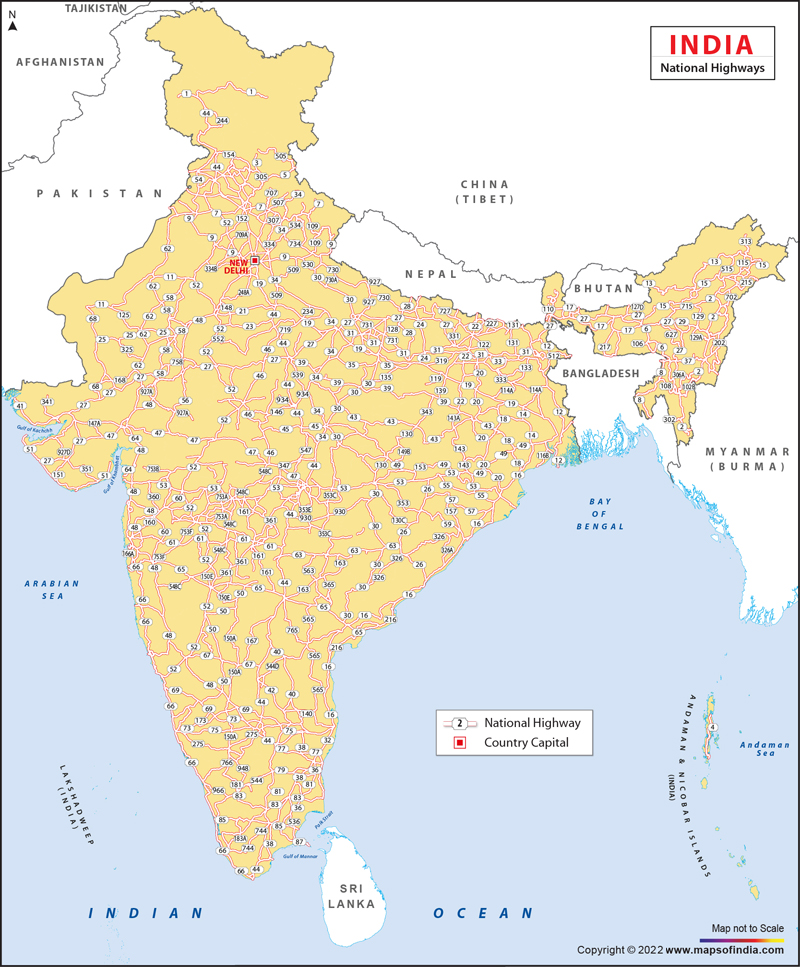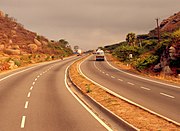NEW DELHI, India - In the middle of the old Grand Trunk Road a temple sits under a peepul tree. The surrounding highway is being widened to four lanes, and vehicles barrel along either side. But the temple and tree thwart even greater speed, and a passing contractor says they soon will be removed.
Kali, Hindu goddess of destruction, thinks otherwise. She is angry, say the colorfully garbed women massing in the holy tree's dappled shade. As evidence, they point to one woman's newly pockmarked face and other mysterious ailments recently visited on their nearby village, Jagdishrai. They have tried to convince Kali that the tree and temple devoted to her must go, but they have failed. Now they have no choice but to oppose the removal, too, even if they must block the road to do it.
Goddess versus man, superstition versus progress, the people versus the state - mile by mile, India is struggling to modernize its national highway system, and in the process, itself.
The Indian government has begun a 15-year project to widen and pave some 40,000 miles of narrow, decrepit national highways, with the first leg, budgeted at $6.25 billion, to be largely complete by next year. It amounts to the most ambitious infrastructure project since independence in 1947 and the British building of the subcontinent's railway network the century before.
The effort echoes the United States' construction of its national highway system in the 1920's and 1950's. The arteries paved across America fueled commerce and development, fed a nation's auto obsession and created suburbs. They also displaced communities and helped sap mass transit and deplete inner cities.
For India, already one of the world's fastest-growing economies and most rapidly evolving societies, the results may be as radical. At its heart, the redone highway is about grafting Western notions of speed and efficiency onto a civilization that has always taken the long view.
Aryan migration, Mogul conquest, British colonialism - all shaped India's civilization over centuries. Now, in a span of less than 15 years, capitalism and globalization have convulsed India at an unprecedented rate of change.
The real start came in 1991, when India began dismantling its state-run economy and opening its markets to foreign imports and investment. While that reform process has been fitful, leaving the country trailing its neighbor and rival, China, India has turned a corner. Its economy grew 6.9 percent in the fiscal year ending in March. India has a new identity, thanks to outsourcing, as back office to the world.
The new highway is certain to jump-start India's competitiveness, given that its dismal infrastructure helped keep it behind the economic success stories of the Asian Tigers.
"The perception of India earlier was that it cannot be in the rank of other fast-growing nations," said Sudheendra Kulkarni, who was an aide to Atal Bihari Vajpayee, the former prime minister who championed the project. With the highway, Mr. Kulkarni said, "People began to see that India is transforming."
To grasp that transformation, and India's transition, a New York Times reporter and photographer spent a month this year driving the first stage of the highway project, which has been dubbed, in awkward but bullish coinage, the Golden Quadrilateral.
More jagged than geometric, the four- and six-lane quadrilateral's 3,625 miles run through 13 states and India's four largest cities: New Delhi, Calcutta, Chennai, formerly Madras, and Mumbai, formerly Bombay. The journey along the highway offered a before-and-after snapshot of India, of the challenges of developing the world's largest democracy, and of how westernization is reshaping Indian society.
To drive east from New Delhi to Calcutta is to travel through flat fields, almost primeval forests, lush rice paddies - and some of India's poorest, roughest states, where contractors have battled violence and corruption to get the road built.
To move south from Calcutta, alongside the Bay of Bengal, through palm-covered hills, then up the west into Rajasthan's desert, is to see the highway as a conduit for the forces molding the new India. Ever-flashier cars, evidence of a frenzied new consumerism, leave bullock carts in the dust. Truckers slow at night for roadside sex workers, each of them potential carriers of H.I.V. Farmers' sons make a beeline for swelling cities that are challenging the village as the center of Indian life.
 National Highway 4: National Highway 4 is the highway between Mumbai and Chennai. The highway passes through Bangalore and Pune and is also one of the busiest highways in India. This highway is part of the Indian government`s Golden Quadrilateral Project.
National Highway 4: National Highway 4 is the highway between Mumbai and Chennai. The highway passes through Bangalore and Pune and is also one of the busiest highways in India. This highway is part of the Indian government`s Golden Quadrilateral Project.



